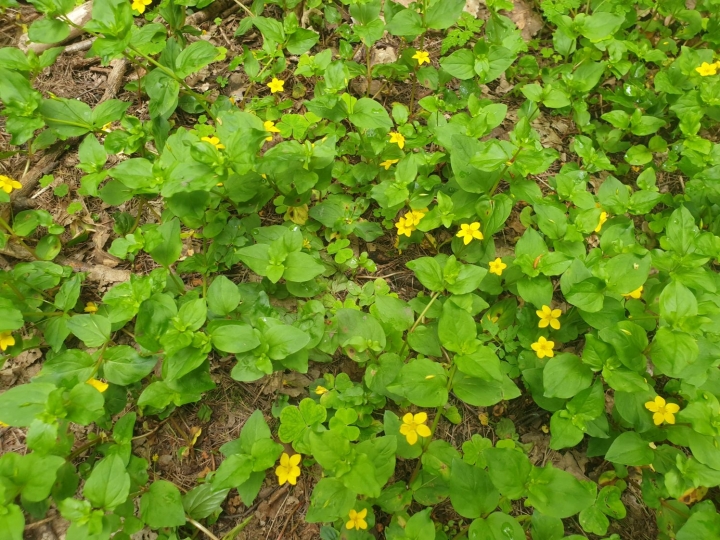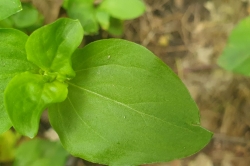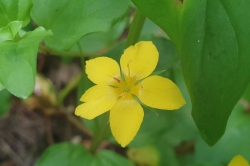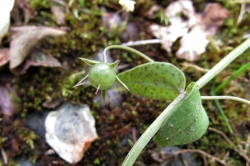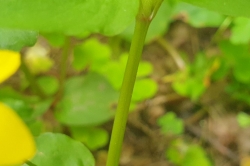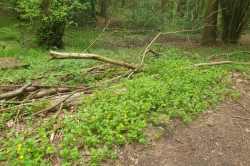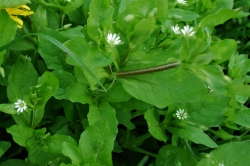The pimpernels, yellow, scarlet, and blue to name a few, although not closely related (actually in the primula family) are very similar in appearance to the chickweeds but with clear differences which is good as several are toxic.
They are low growing straggly plants often growing in broad patches but only reaching 20-30cm tall. The 5 petalled flowers are 5-10mm across and yellow, red, blue or pink. They are not hairy. None have the line of hairs along the stem like common chickweed. None are hairy like mouse eared chickweeds. None have white flowers like the chickweeds.
The pictures here are of yellow pimpernel, Lysimachia nemorum a plant of damp woodland and Scarlet pimpernel, Lysimachia arvensis, the blue pimpernel is Lysimachia foemena.

